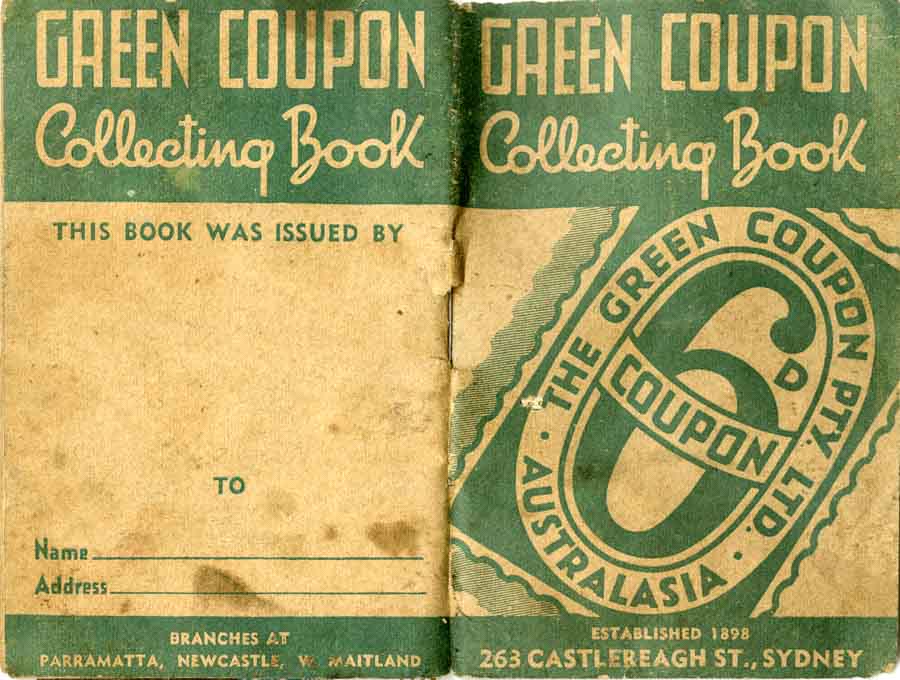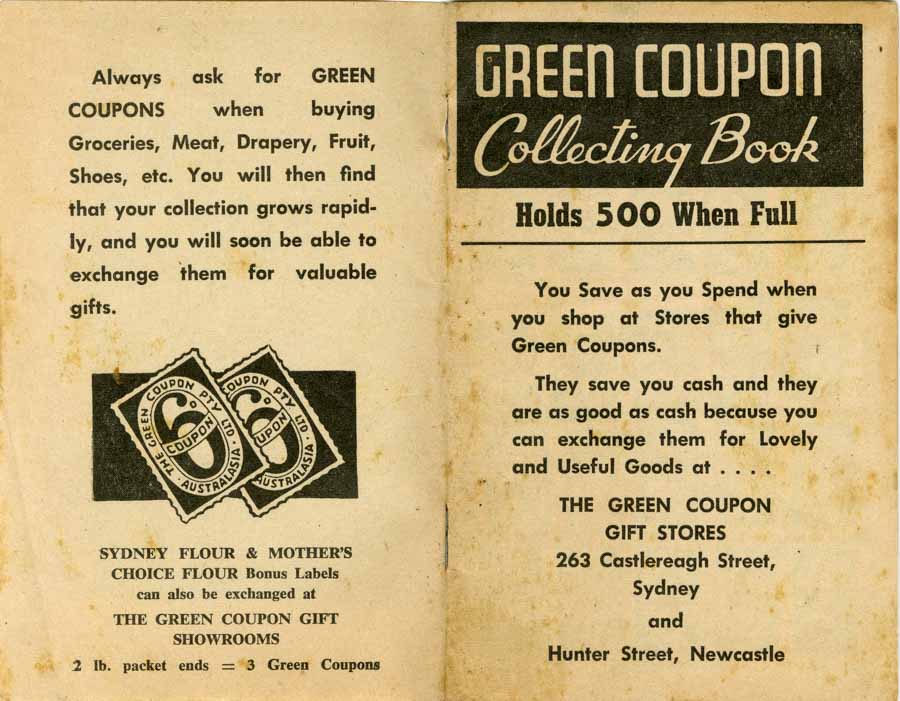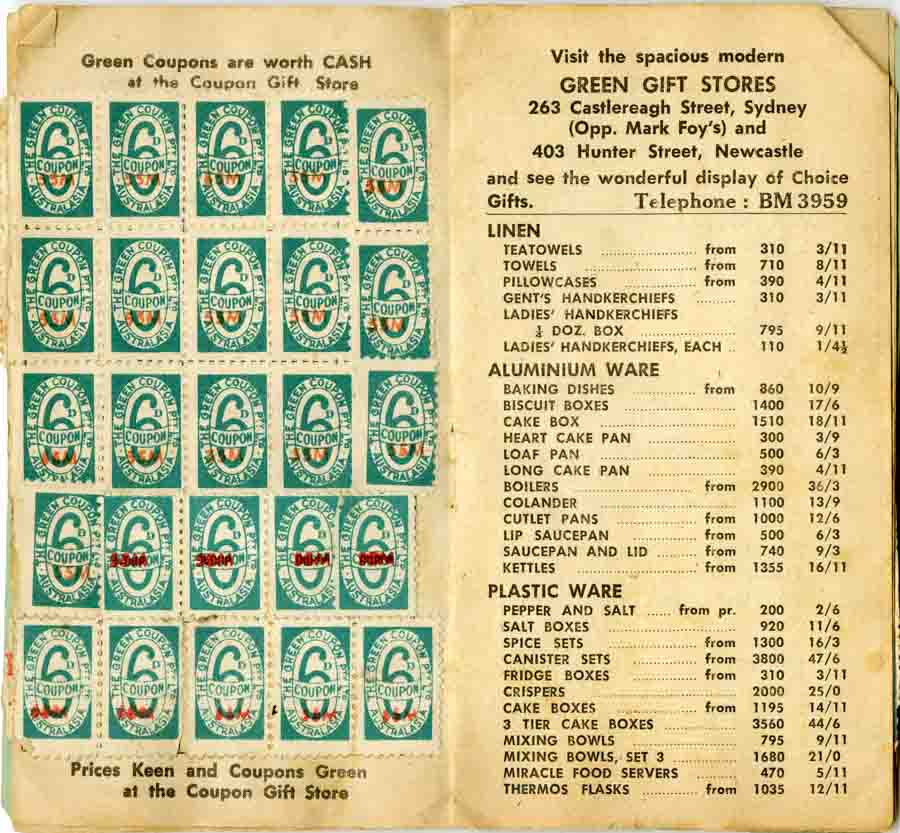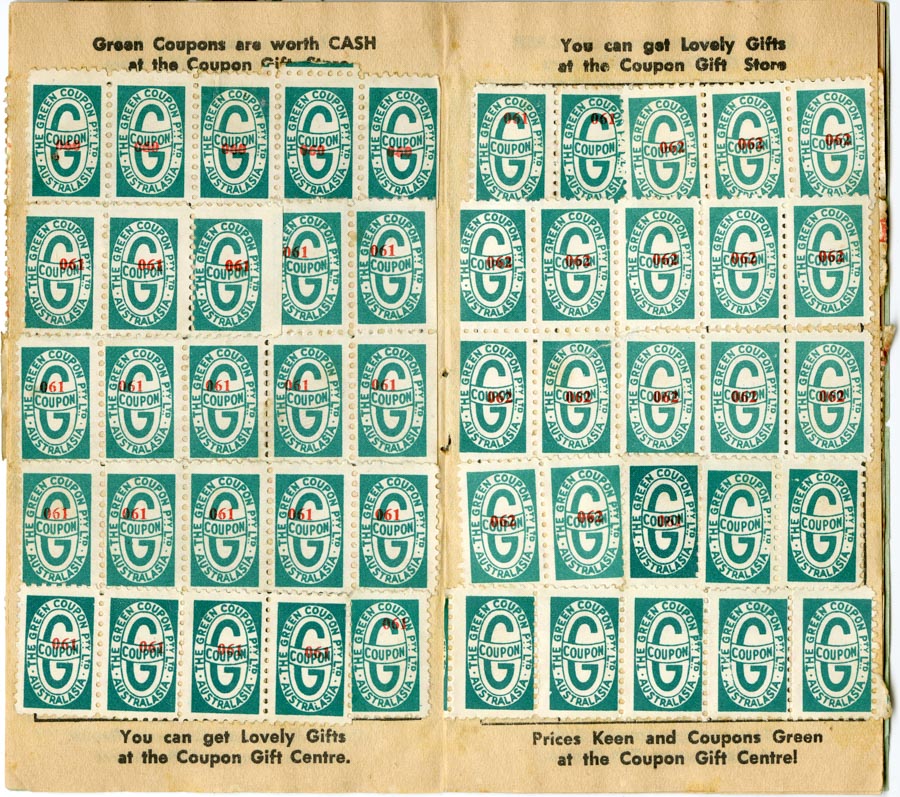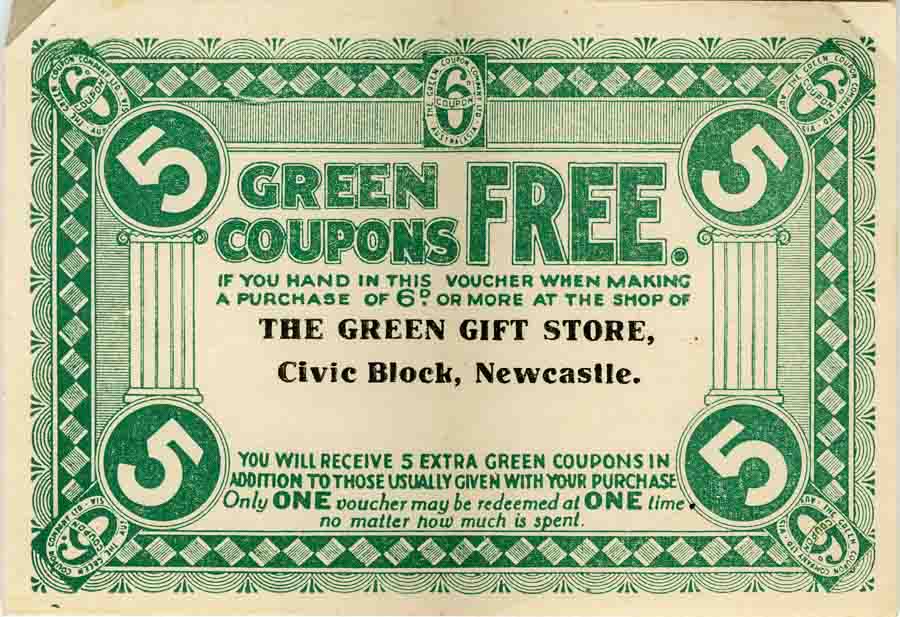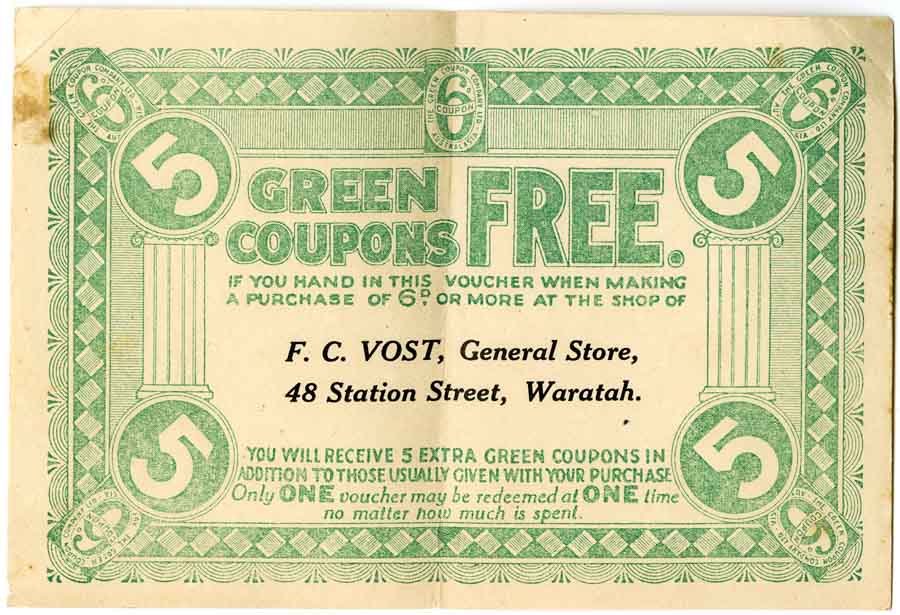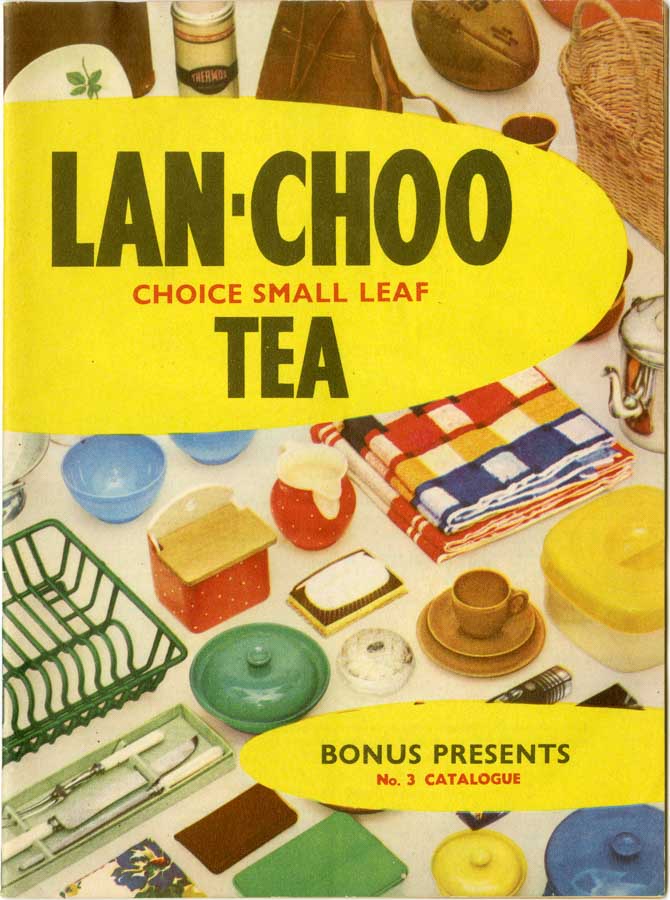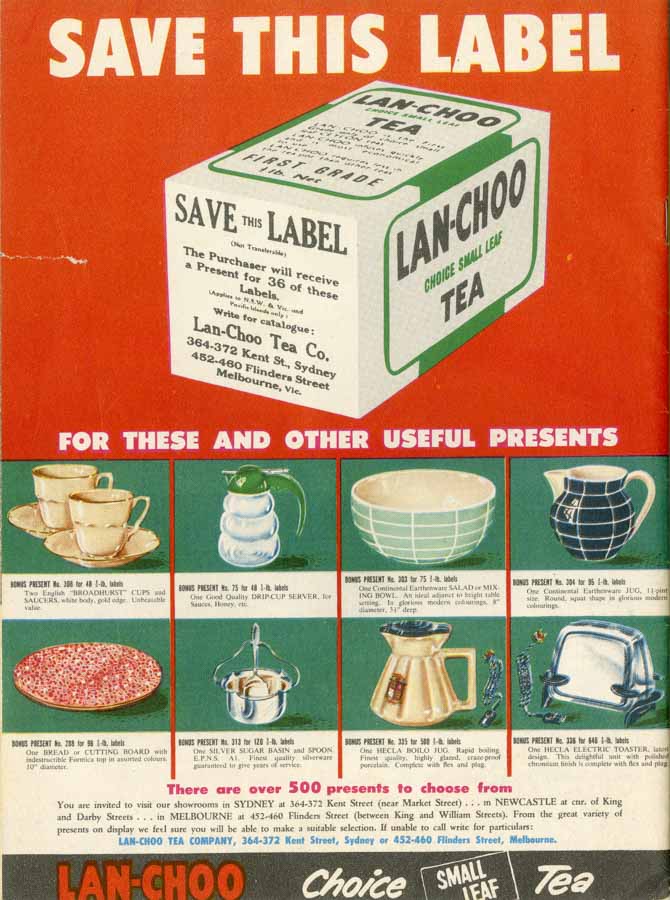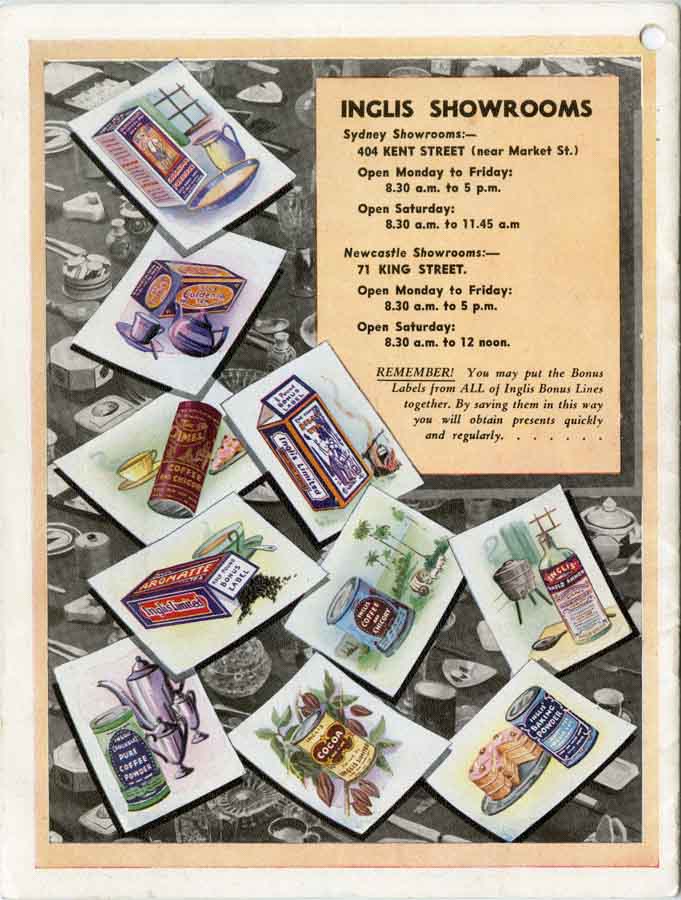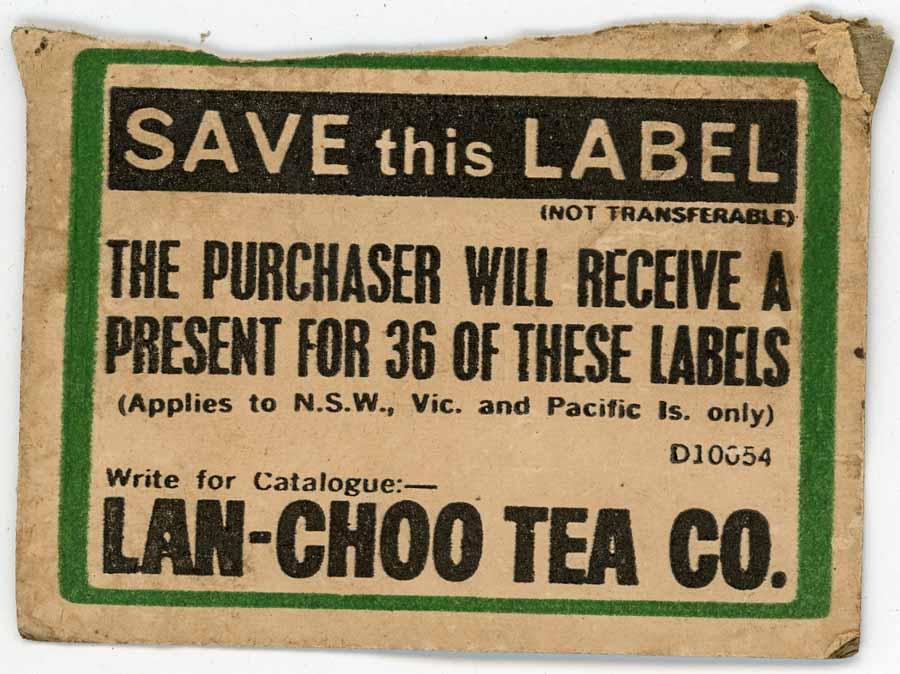In decades past, many Australian households had little pocket-sized albums in which were stuck hundreds of tiny stamp-like coupons. These were diligently saved until the books were full and then traded for items at special stores that were operated by the companies that issued the stamps.
A number of these loyalty schemes existed, but for many years the biggest and most popular was probably the Green Coupon.

It seems that Green Coupons began in the United States in 1896 when the Sperry and Hutchinson Company introduced their clever scheme, under which they sold sheets of “trading stamps” to retailers, who then gave these to their shoppers with each purchase, at a rate that they determined for themselves. The shoppers would save the stamps and then redeem them for goods at Sperry and Hutchinson’s own coupon stores.
The scheme came to Australia in 1898 and became enormously popular for several decades, particularly in periods of economic hardship when thrifty shoppers coveted the coupons as a way of seemingly getting something for nothing. Retailers were drawn to the coupons as a promotional device, but sometimes found themselves resenting what became almost a compulsion. If they didn’t offer the coupons, some complained, the shoppers would go to other retailers who did.
In NSW the main Green Coupon store – where the coupons were redeemed for goods (which could also be bought with cash) – was naturally in Sydney – in Castlereagh Street – but there was a store in Newcastle’s Hunter Street too, and at one time there were branches at Parramatta and West Maitland. The Green Coupon Company seems to have been alert to many kinds of promotional opportunities, and in 1922 it promoted a scheme for community fund-raisers, offering an album stamped with the name of a chosen hospital or church and undertaking to pay £1 cash when it was filled.
Growing up in the 1960s I was aware of trading stamps, such as Tiki Green and Blue Shield. It seems that by 1970 NSW was the only state of Australia that permitted trading stamps, and the Government decided to outlaw them in 1971. This article in The Bulletin explains some of the problems trading stamps created for retailers and small business owners when the market became too saturated with stamps. Apparently the cost of buying the stamps could be a major impost for businesses and it didn’t make sense when everybody else had them too.
In our house I mostly remember Lan Choo tea labels, which were saved for redemption either by ourselves or by the school we attended. This was a far different type of scheme, under which you saved labels from the end of the box of tea and traded them for items from the Lan Choo gift catalogue.
Apparently, the old Green Coupons could be exchanged for a modern equivalent of “Green Points” – in the USA, at least – until late last year when that scheme was discontinued.
These days, trading stamps are mostly seen at garage sales and in shops that sell bric-a-brac and old wares, and – apart from some appeal to certain stamp collectors – they are worthless except as curiosities.


